On a recent visit to the Golden State Bonsai Federation’s Bonsai Garden at Lake Merritt, a number of trees with scars caught my attention. The first is a Coast oak collected from Carmel with extraordinarily small leaves. The scar has completely healed over and how adds interest to the already gnarly trunk.
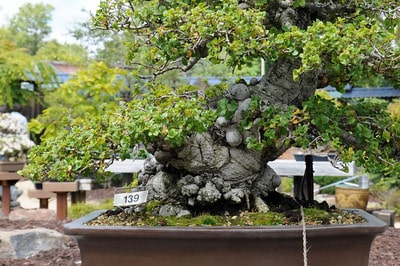
Coast live oak
Likewise, several scars on the trunk of an old liquidambar are well on their way to healing over.
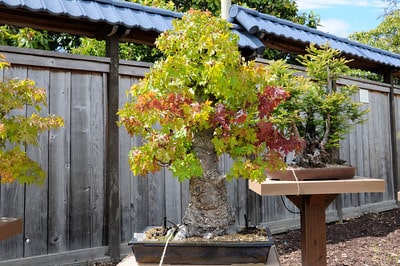
Liquidambar
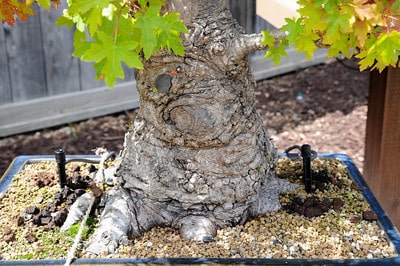
Liquidambar – trunk detail
Because time is one of the great trump cards in bonsai, even scars, given enough time, can become points of interest. I kept this in mind with viewing a hackberry with a significant scar on the upper part of the trunk.
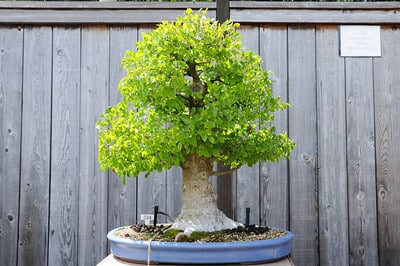
Hackberry – great trunk
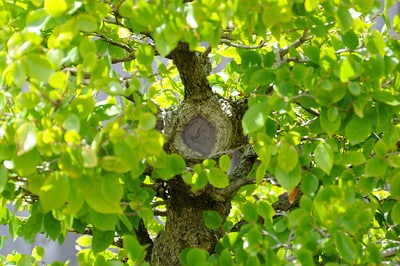
Scar
Sometimes we have to remove branches or clean up dead areas of the trunk in conspicuous locations. How to minimize the scar? Beyond waiting for the wound to heal over, we can wire branches in front of the scar to hide it. This works in summer, but not so much in winter.
Although oak aren’t often known for their scars, the old Daimyo oak – an 1863 present to then envoy to China Anson Burlingame – has a wonderful hollowed out trunk.
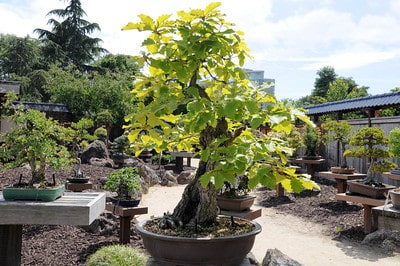
Daimyo oak
As I strolled out toward the end of the garden to the mound with the wonderfully flowing blue atlas cedar, something caught my attention. Was that a juniper?
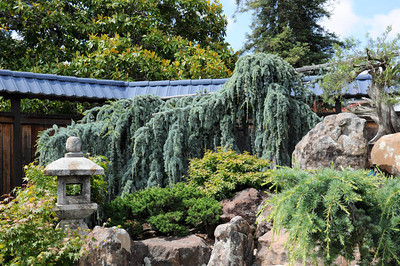
Weeping blue atlas cedar
Yes – one of the collection’s California junipers appears to have snuck up on the mound when no one was looking.
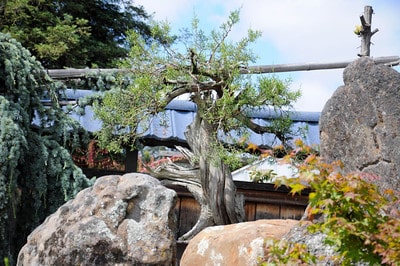
California juniper
As no visit to the garden would be complete without viewing Mas Imazumi’s Japanese black pine, I stopped by for a look. It’s long been one of my favorite bonsai.
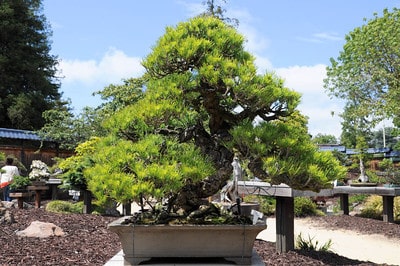
Japanese black pine
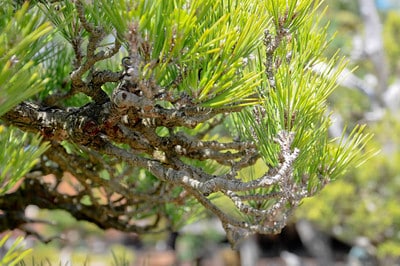
Branch detail
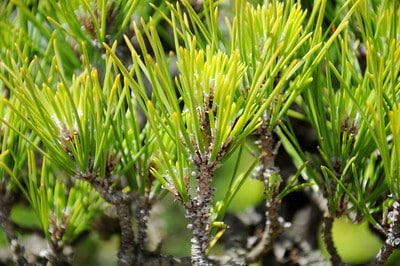
Foliage detail.
Just next to the pine, A monstrous California juniper awaits further styling. It’s quite a project.
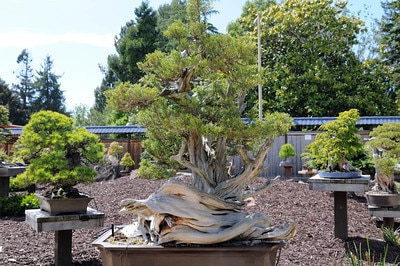
California juniper
